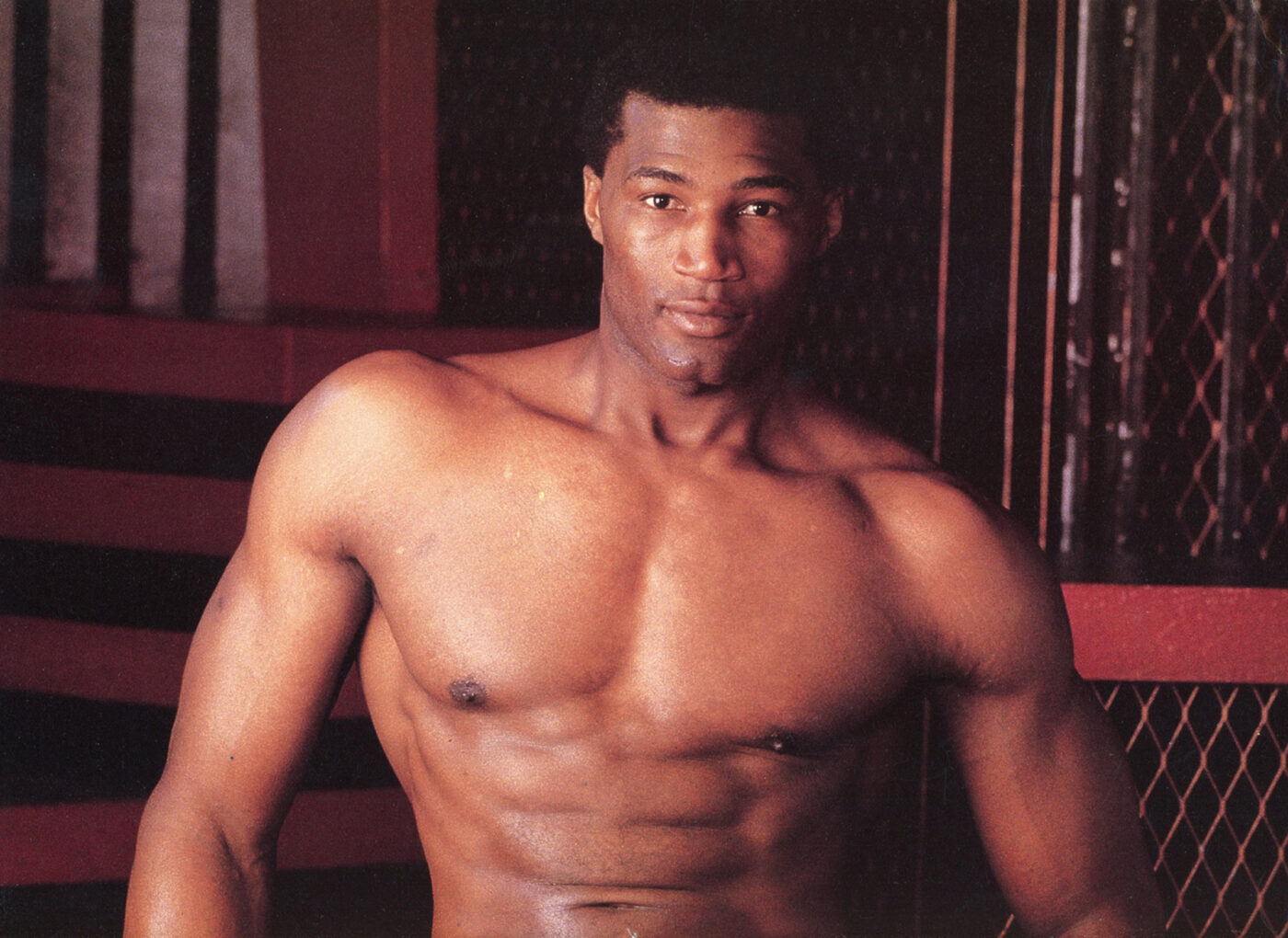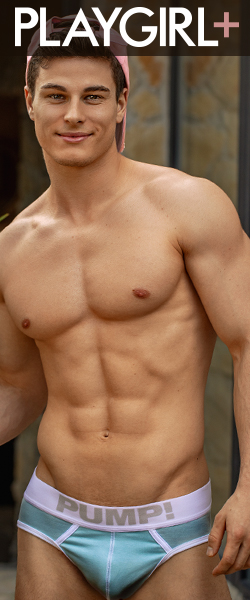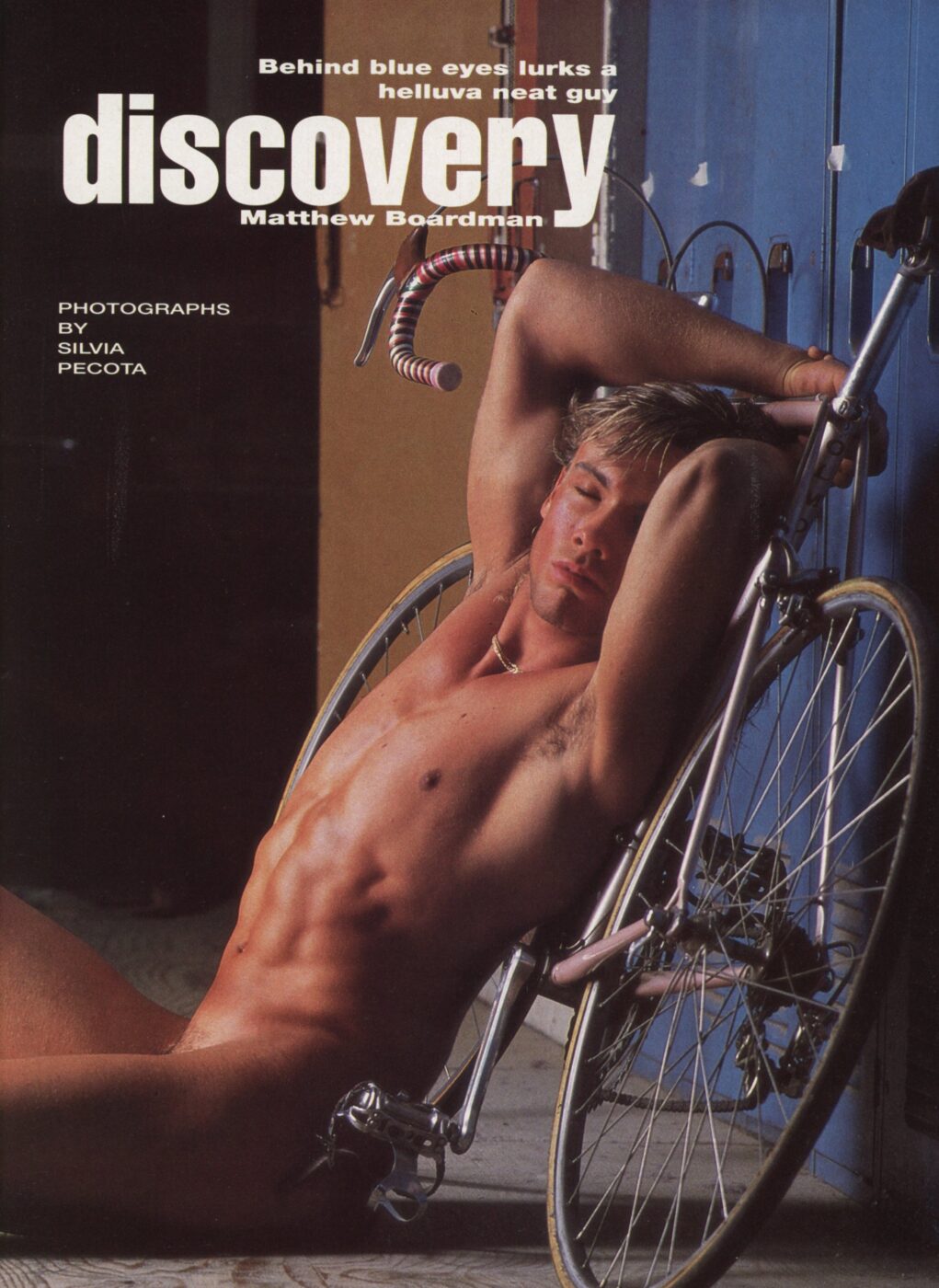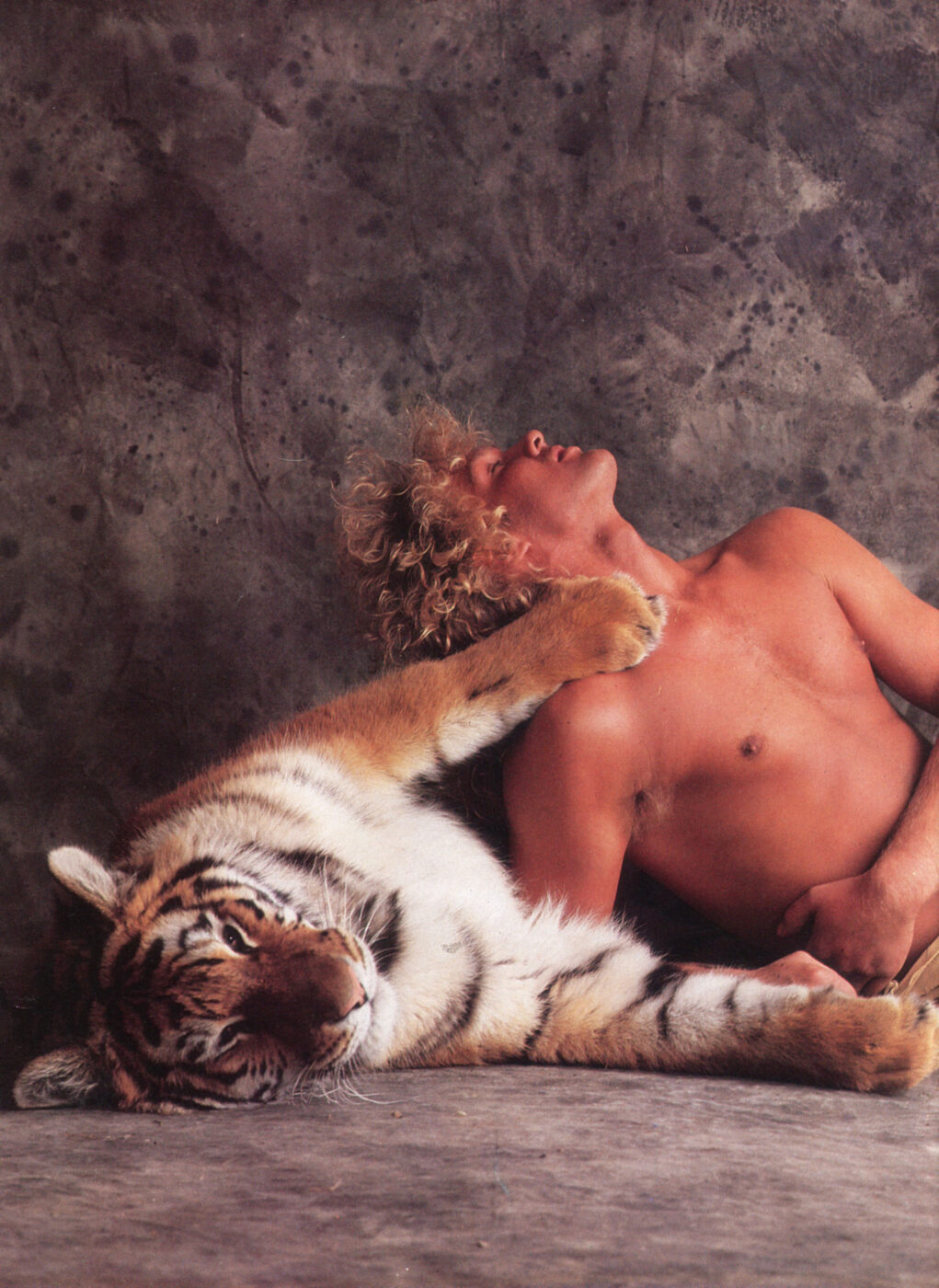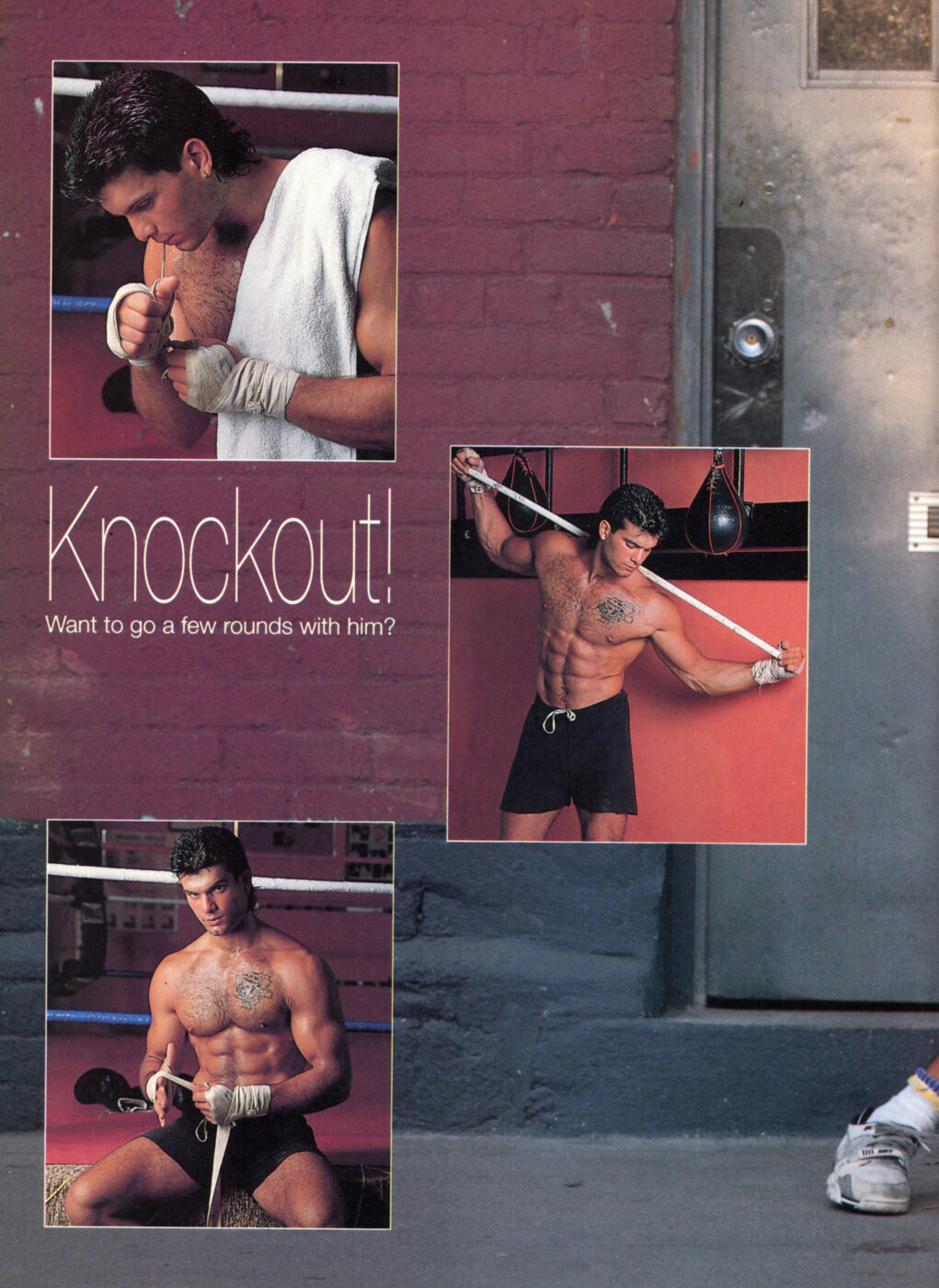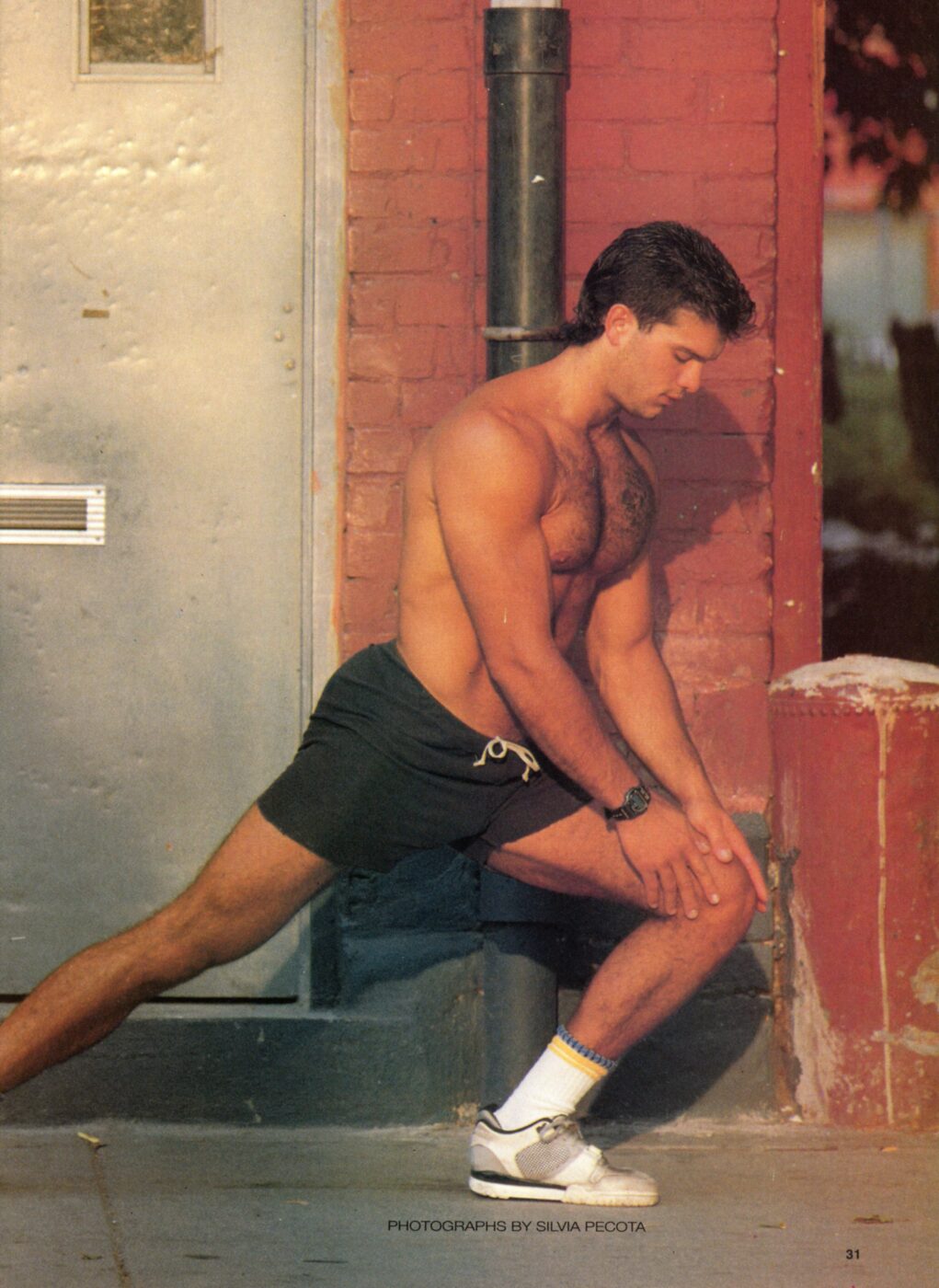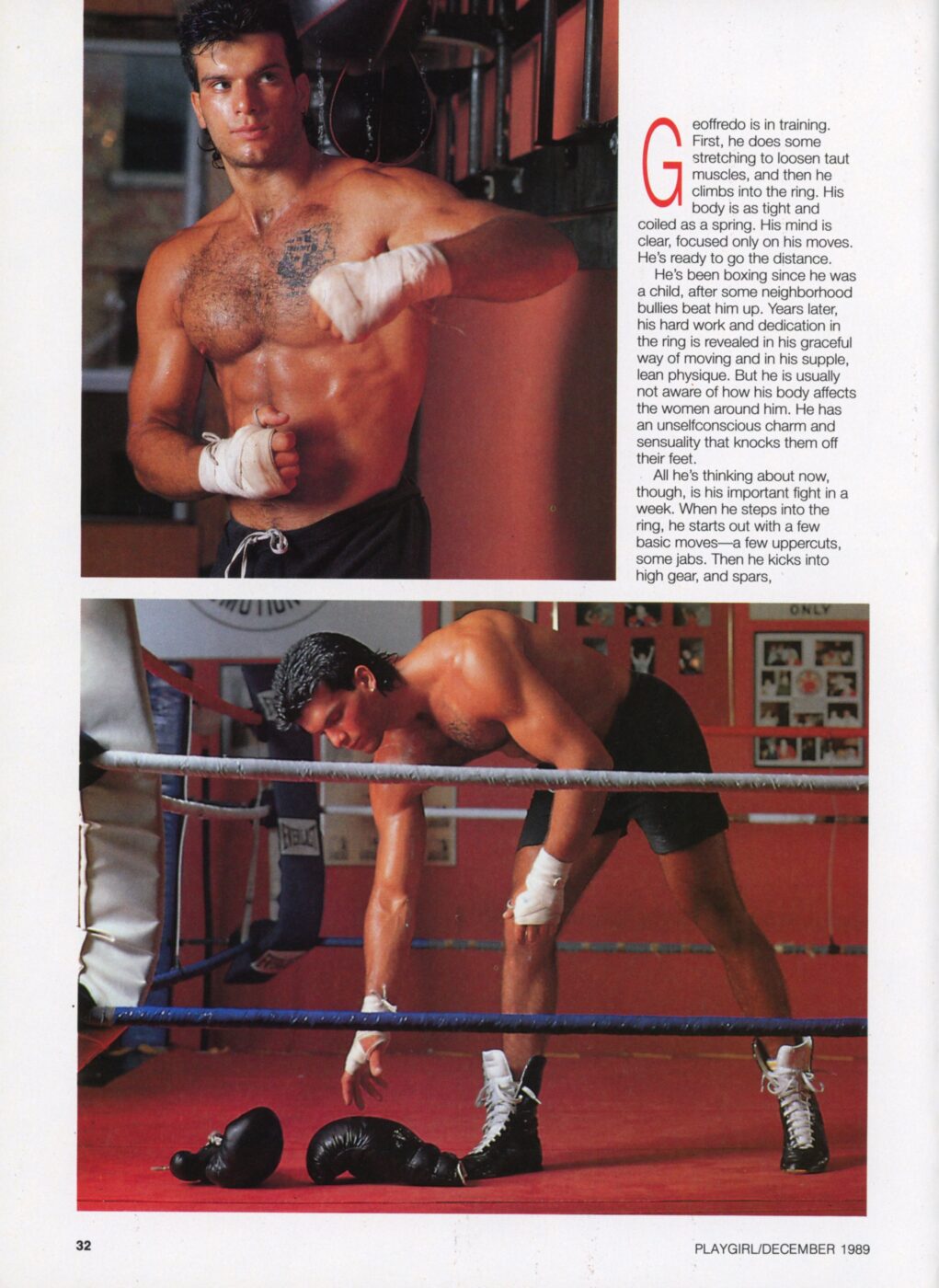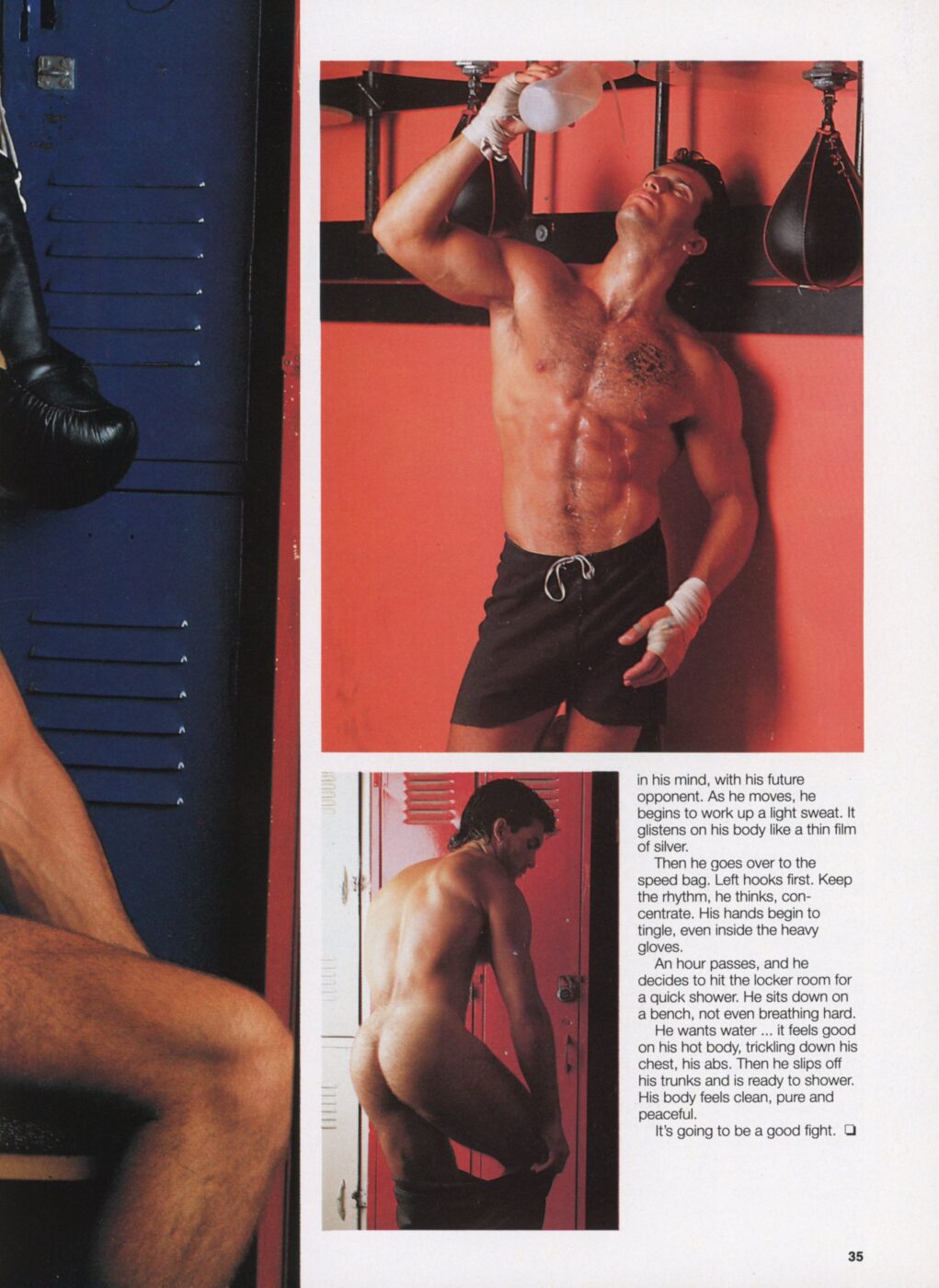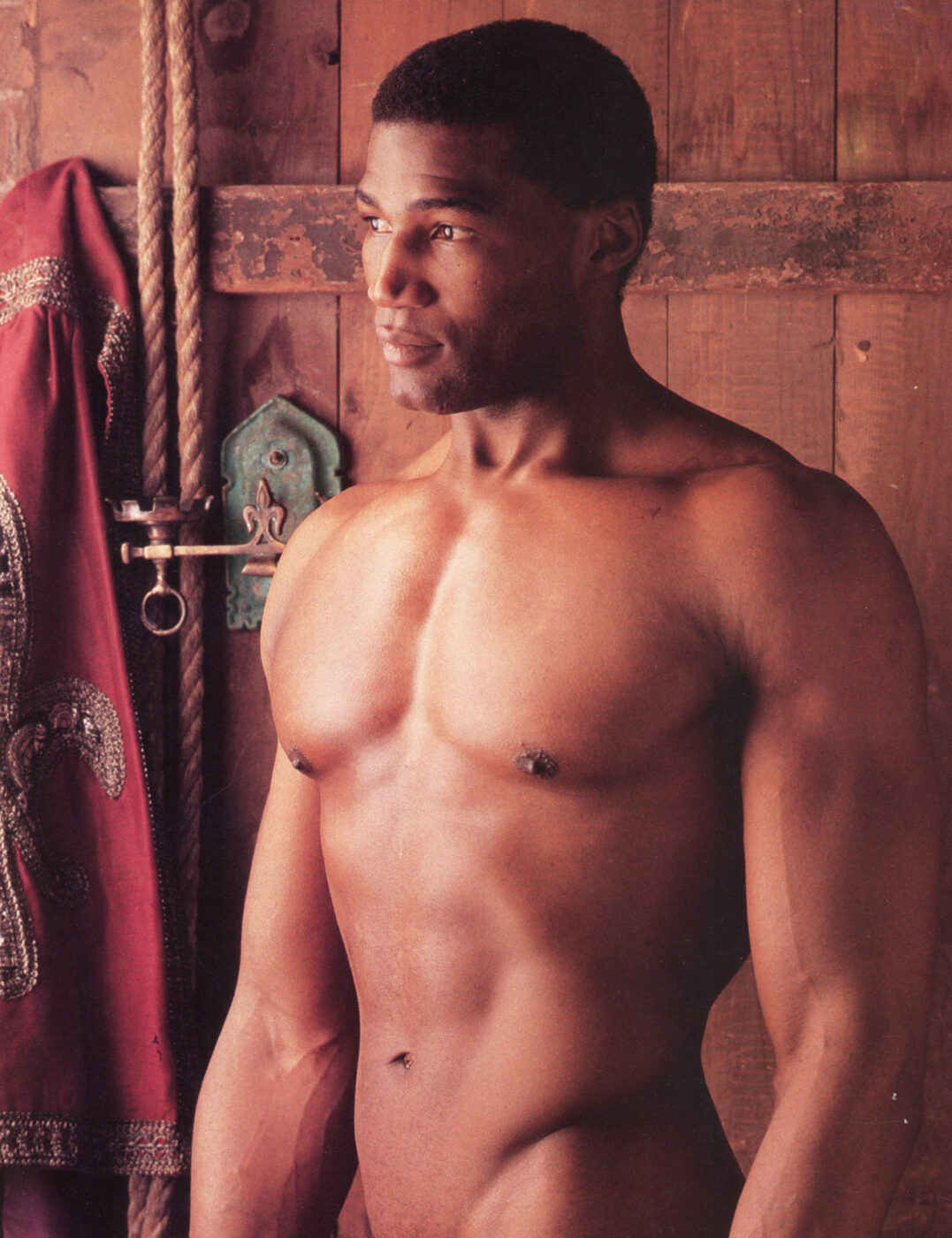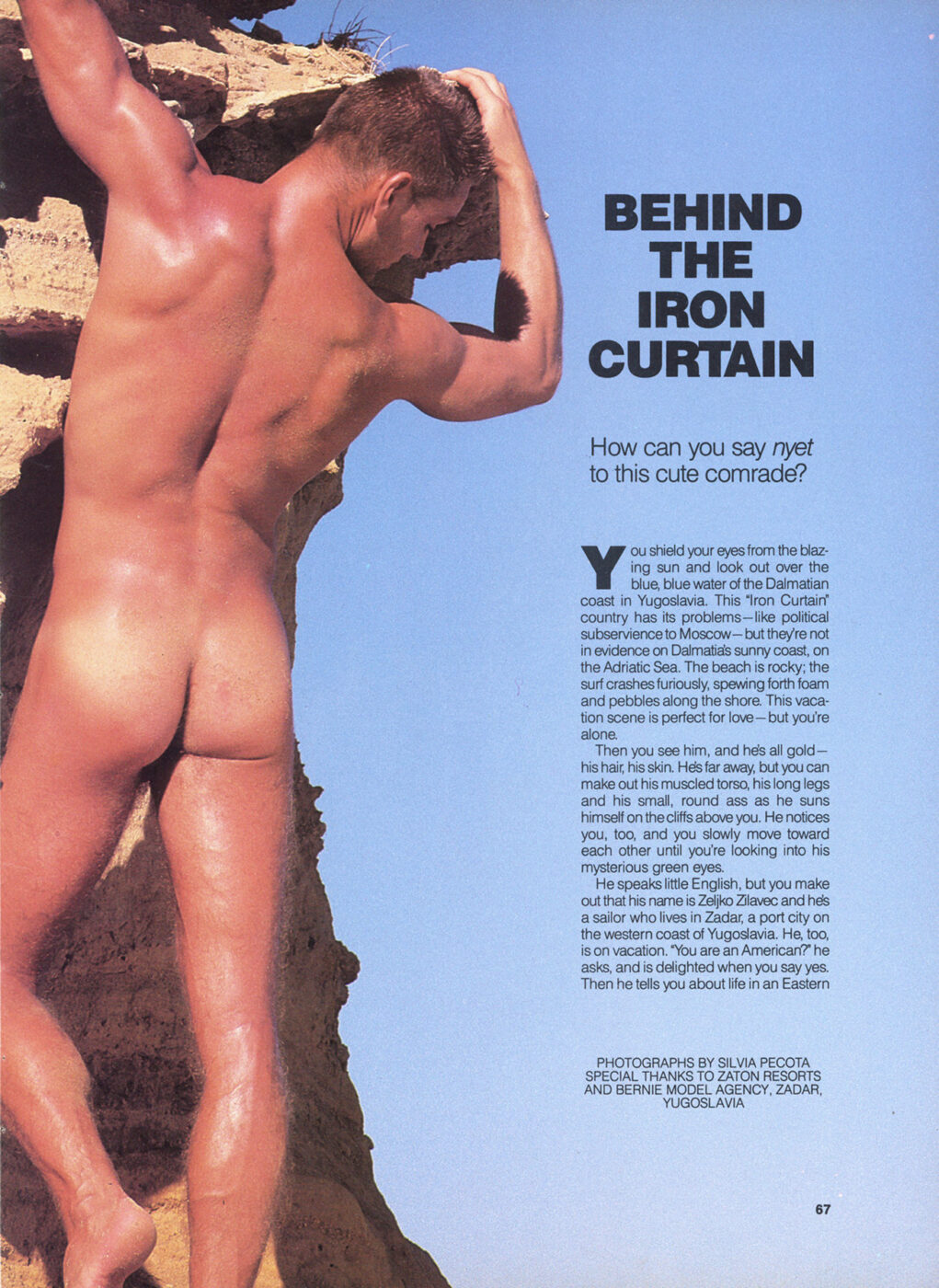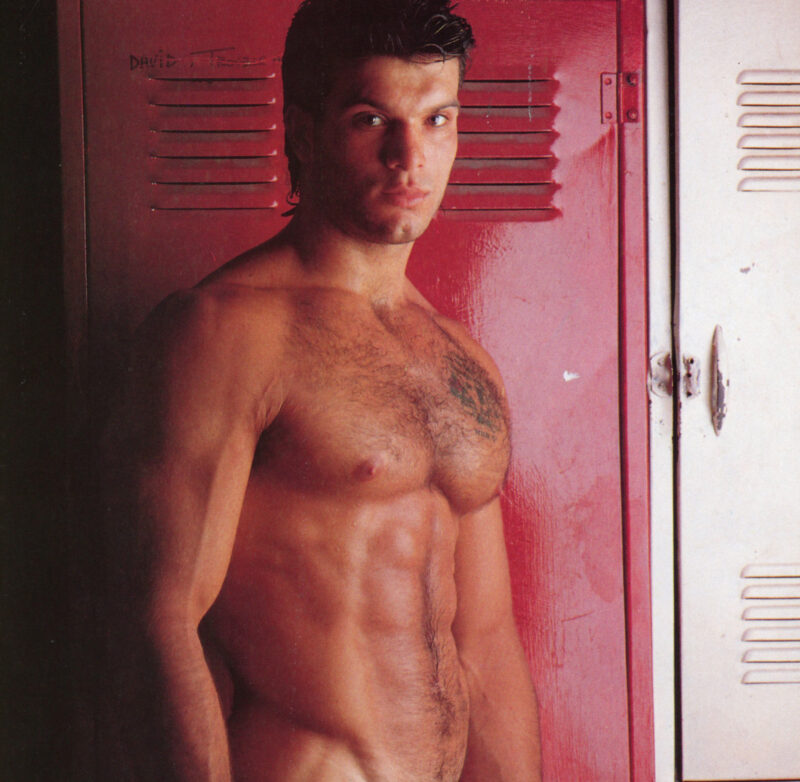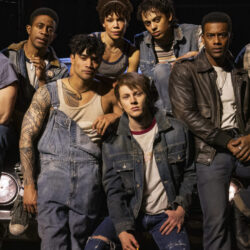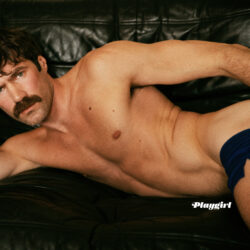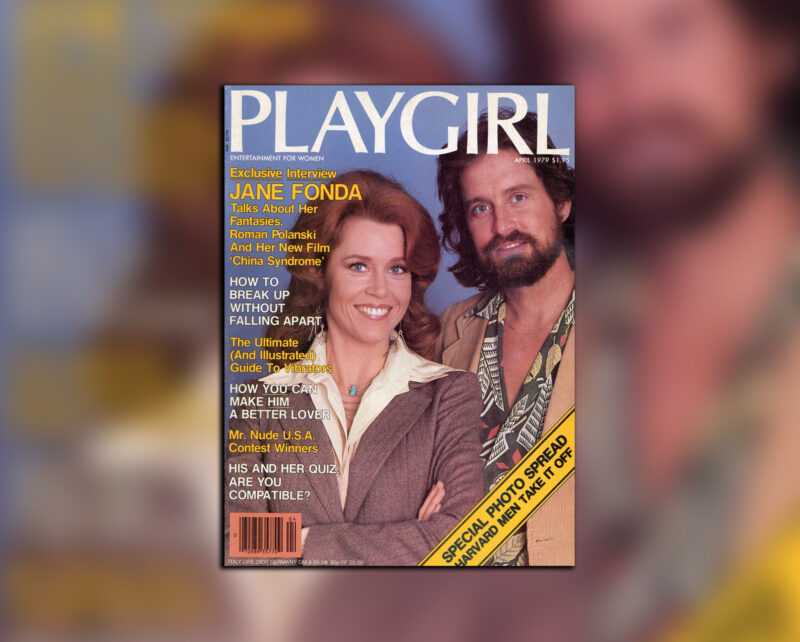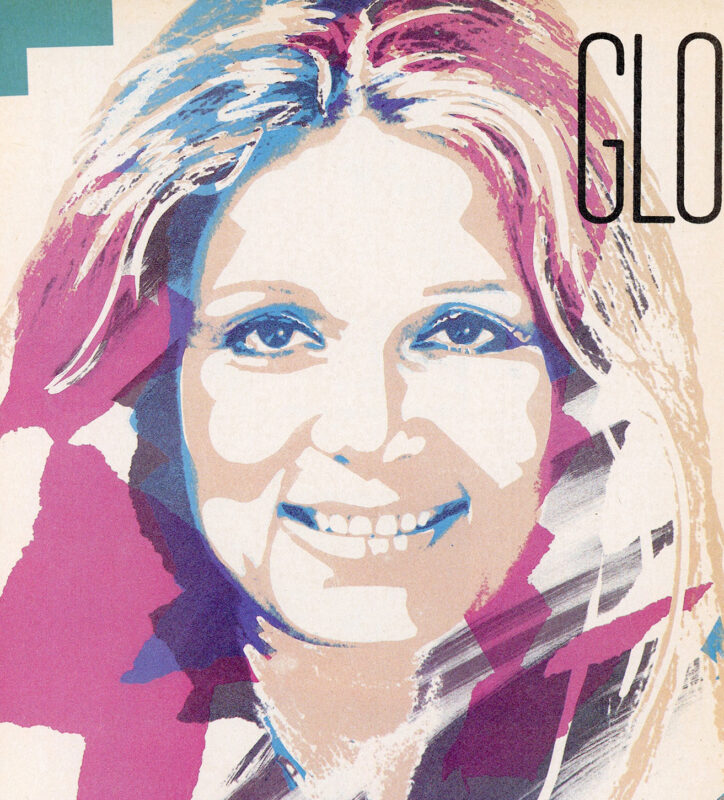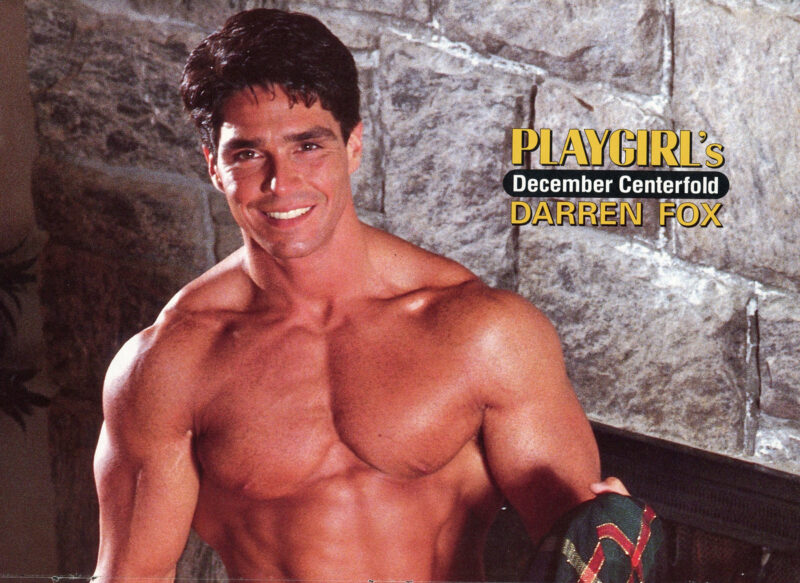Many female photographers have contributed to Playgirl over its five decades. Or so the photo credits would lead us to believe. The truth of the matter is that we don’t know: were most of them male photographers working under pseudonym? Well, Toronto-born Silvia Pecota is no pseudonym. She’s an award-winning woman and still very much active today: Pecota “has exhibited in Canada, the United States, Germany, Italy, the former Soviet Union and Afghanistan. Since 1985, her photographs have appeared internationally in several top publications.” Not least Playgirl, where she made her mark (1988-1990), by offering a unique painterly eye and a fresh new perspective on the male nude. We sat down with Pecota for a revealing interview.
How did you get started with photography and why?
I always had a passion for the arts. Initially I took two years of animation at Sheridan College, but realized that on a god day I could accomplish only 2 seconds of work…lol (i.e. 24 drawings =1 sec). So next, my goal was to get into film making, but that required a crew. To be independent and get quick results…photography it would be.
Fast forward to 1988. How did you and Playgirl come about?
I was a freelance photographer for the Toronto Sun and was photographing primarily for the Lifestyle section where every day a “Sun Shine Boy” was featured. So, I would submit weekly photos I took of athletic men. During the sport seasons, my photos would appear as poster pullouts –including the Toronto Maple Leafs, the Toronto Blue Jays and the Toronto Argo Football teams. I specialized in capturing images of the male form. The subject matter of
Playgirl was right up my alley, and I decided to submit photos of four good looking male athletes and I received an immediate response from the editor… and the door was open.
Your themes, styles and technique vary greatly. But you’re partial to real settings and on-location shoots, in Canada and all over the world. Tell us more about your globetrotting.
There is no backdrop more photogenic than Europe. Granted, that is an expensive endeavor. Working at the Toronto Sun (and its affiliated papers), I was able to go on swimsuit shoots, primarily in the tropics. Locations in Toronto were limited, but I did look for areas that had more character.
Another constant we see: the use of natural light, your mastery of chiaroscuro and of saturated colors.
Color is key in composition. Details make all the difference. Accents are used as punctuation that should complement the model, so that you’re drawn into the subject matter and not distracted by peripheral confusion.
Your Playgirl spreads are very different from everything we had seen before on the magazine: how would you define your approach to the male form and the nude as a genre? And how would you define the female gaze –yours– vs the male gaze?
When photographing (or painting or sculpting) the nude, it is the beauty of the form that interests me. I don’t view it as a sexualization. Perhaps because of my Italian roots: there, the nude is not considered taboo as in North American West. Granted there are countries in this world where showing a patch of skin is… criminal.
But even the Bible describes the nude and Classical Antiquity glorified the human figure to the point that beauty was calculated in mathematical measurements. The Italian Renaissance was directly inspired by the ancient Greek sculptures. It was a “rebirth” (the literal translation of Renaissance). In DaVinci’s “Vitruvian Man”, one can see how measurements determined the perfect form of the human body.
And so, when photographing the male form, it is the beauty that I see. The movement, the strength, the lighting accentuating the musculature. The background can be as important as the foreground for it is the canvas …the pedestal (in sculpture) that supports and complements the figure. Every element, not just lighting, but also color, pose, expression, positioning of the hands and the feet…the tilt of the head, the gaze of the eyes…it all comes together into a composition.
With regards to a female vs a male gaze, I feel that a woman sees the male form (and female form) for its aesthetics more so than “stirring hormones” (lol). I also see beauty in the female form and I am as inspired. And where I draw inspiration from is the classical art forms. This is why I often travel to Europe: I get my “fix” there and always return back home overflowing with ideas.
I have now transitioned back into the arts, including painting. My work has evolved by combining all my skills, photography, painting, digital imagery. I can create my backgrounds from various shoots and select poses of models and blend all elements into layers digitally, adding that painterly quality. It’s as life came full circle but merged into one artform.
What can you tell us of the PLAYGIRL editors and/or the art directors your worked with? The good, the bad and the ugly.
I basically had a good relationship –always encouraging, always asking for more frontal nudity…lol. It is the human form that I am most inspired to photograph, but more so, draw and paint. To be honest, the genital area is more of a distraction. The eye goes immediately there. As per classical Greek sculpture –that in turn influenced the Renaissance– the penis is very small. Look at Michelangelo’s David. You see the form –the pose, the intensity in the eye, the beauty of the musculature of the torso– you almost don’t see a naked man. You see a warrior who is standing up to an adversary far more powerful. The theme was chosen at the time of the Medici in Florence, as Florence did not have a fierce army, but it stood up to aggressors coming from all sides… and remained free and flourished. And that in turn gave us the Renaissance.
But I’ve digressed… With regards to editors and art directors, there was one who unfortunately did not take to my photos. As a Canadian (and a photojournalist), I was able to enter the Soviet Union under Gorbachev. Russia was opening up to the world, Playboy had its first spread of a Russian model, it made headlines. I was able to photograph a most handsome Russian man in Moscow. For some reason, this editor didn’t want to publish it. After all I went through to get those shots… That’s when I decided to no longer contribute, not with that woman in charge.
Who are the photographers and/or the artists who have influenced you the most?
In terms of artists, the Renaissance, the Italian Renaissance in particular. The colors, the themes, the beauty… everything during that time period I find inspiring. And then there is the Flemish master Rembrandt and the late Renaissance Caravaggio who use intense chiaroscuros…the drama of lighting. And it suits the male form better than the female –as it accentuates the musculature. With regards to photographers, Richard Avedon and Bruce Weber for their male nudes, Yousuf Karsh for his portraits, Irving Penn…
Thank you, Silvia. And keep up the good work!

